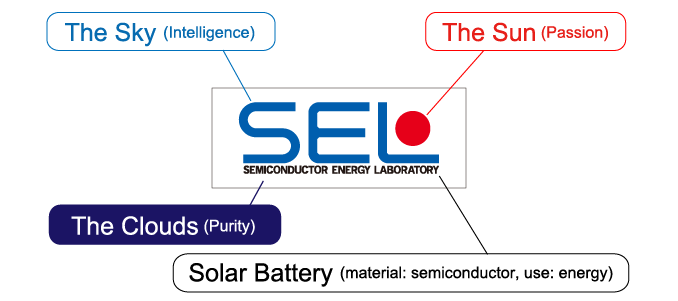New 8K OLED Displays for Tablets and Laptops: 8.3 and 13.3 Inches
by Anton Shilov on December 21, 2018 1:00 PM EST
Semiconductor Energy Laboratory, a technology developer from Japan, has developed the industry’s first 8.3 and 13.3-inch OLED displays featuring an 8K resolution. The monitors use crystalline oxide semiconductor technology and they are likely preliminary designs for future product commercialization. The company also recently showcased a bendable 8.6-inch OLED panel, potentially for a foldable tablet or smartphone.
| Size | Resolution | PPI | Refresh Rate |
Bendy |
| 8.3-inch | 7680 x 4320 | 1062 | 60 Hz | - |
| 13.3-inch | 7680 x 4320 | 663 | 120 Hz | - |
| 8.6-inch | 1900 x 1200 | 263 | 60 Hz | Yes |
Both of SEL’s OLED panels featuring a 7680×4320 resolution use a color filter that relies on CAAC-IGZO (c-axis aligned crystalline indium gallium zinc oxide) material. The 8.3-inch 8K panel can boast with a rather high pixel density of 1061 pixels per inch and has a refresh rate of 60 Hz. The larger 13.3-inch 8K panel features a pixel density of 662 PPI, but has a refresh rate of 120 Hz, which is particularly high for an OLED. The 8.3-inch 8Kp60 OLED was demonstrated last month at SEMICON Japan, whereas the 13.3-inch 8Kp120 OLED currently exists only in SEL’s labs.
The 8.3-inch display is 1062 PPI. For comparison, Sony's Z5 Premium with a 5.5-inch display and 4K resolution was 801 PPI. At 8.3-inches, it's a little big for a smartphone, so it will be interesting if that size can come down a little bit. 8K at 6.5-inches would be 1355 PPI, so the power draw would be quite interesting.
Other notable developments of SEL include a foldable 8.6-inch OLED panel with an 1920×1200 resolution rated for 10,000 bend/unbend cycles (that is 27.4 folds per day over a year) as well as OLED panels capable of displaying the BT.2020 color space.
The primary focus of Semiconductor Energy Laboratory’s work is development of crystalline oxide semiconductor technologies for various applications including chips and displays. CAAC-IGZO is recognized as one of next-generation materials that enable high-resolution low-power displays, so SEL is working on its practical implementations. Being an IP-licensing company, SEL does not have its own production capacities, so it will need a partner to make CAAC-IGZO-based 8K OLEDs a reality.
Related Reading
- Samsung Begins Sales of 65-Inch Q900R 8K UHDTV in the UK
- Samsung Starts to Take Pre-Orders on 85-Inch Q900 8K UHDTV
- Samsung’s One Invisible Connection: 75 Gbps and 230W in a Ultra Thin Cable
- Sharp’s 8K UHD TV Available in Japan, Listed in Europe for €11,899
- Sharp Announces 2nd Gen 8K UHD TVs at IFA
- AUO to Ship 8K UHD TV Panels in Coming Months
- Philips Demos 328P8K: 8K UHD LCD with Webcam, Docking, Coming in 2018
- Dell’s 32-inch 8K UP3218K Display Now For Sale: Check Your Wallet
Source: Optronics Online












59 Comments
View All Comments
Ian Cutress - Friday, December 21, 2018 - link
My fault on the tableMrCommunistGen - Friday, December 21, 2018 - link
whoa. That's pretty bonkers PPI. Not that it should make any practical difference, but I wonder what the sub-pixel structure looks like.Also, I love the term "Bendy" in the table. It's fun.
hd-2 - Saturday, December 22, 2018 - link
I signed up just to agree that the Bendy column got a laugh out of me.ajp_anton - Friday, December 21, 2018 - link
"so the power draw would be quite interesting"Since it doesn't have a backlight to block with the transistor for each subpixel, does an OLED's resolution affect its power draw at all?
(Ignoring the processing required by the GPU)
boeush - Friday, December 21, 2018 - link
I have exactly the same question. Is there something intrinsic to OLEDs that means more-but-smaller pixels is worse than fewer-but-larger pixels, when the total lit area is held constant?Or is this purely about the image-processing and signal-transmission power losses?
haukionkannel - Tuesday, December 25, 2018 - link
Only the prosessin power needed to populaatio that screen. You have to make more write calls because resolution is higher. That is why even 2080ti is not enough to 4K not to mention 8K that would need four times more prosessin power than 4K.ajp_anton - Tuesday, December 25, 2018 - link
My Intel graphics 540 runs 4K just fine, so I don't know what you're talking about...aenews - Wednesday, December 26, 2018 - link
RTX 2080 Ti is solid for 4K. Just don't expect >60FPS on every AAA title. However, that's for very high-end gaming. You don't need much graphics power just to smoothly run at a certain resolution.Oxford Guy - Friday, December 28, 2018 - link
This may be a strategy for compensating for the poor lifespan of blue OLED subpixels. Having a massive excess of resolution needed for anything other than a close-to-the-eye wearable (e.g. VR) means pixel duplication can be used. Have half of the blue subpixels active when the device is new. Then, when the subpixels wear out, begin to bring in the others or simply turn the old ones off.Oxford Guy - Friday, December 28, 2018 - link
Of course, the drawback to this strategy is that — the smaller the pixel is, the quicker it will wear out. So, I don't know if there is anything to be gained by doing this.